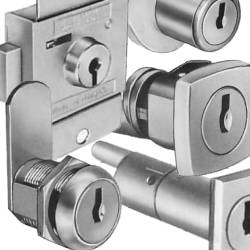How Do I Maintain My Lock?
A door lock is a very simple mechanism but it is also very effective. It carries out an extremely important job on a very consistent basis and we are perhaps guilty of underrating how vital its correct functioning is. Certainly we can very quickly be thrown into crisis if a lock stops working and we suddenly feel extremely vulnerable, and hence it is probably true that we don’t appreciate the importance of door lock maintenance.
What happens if we don’t maintain our door locks?
Our door locks are used several times every day, as well as being exposed to the heat, the cold and the wet. This means that over time our door locks can become hard to use, can become damaged and can also become easier to compromise and circumnavigate, leaving us vulnerable perhaps without even knowing it.
So in the day-to-day use of our door locks they can:
- Pick up dirt and grime
- Become corroded by the elements
- Work loose
- Become worn and break
So door lock maintenance is extremely important and is very simple to do, and here are the key tasks we can carry out on a routine basis to ensure our door locks operate effectively, provide peace of mind and enjoy an optimum lifespan.
Important door lock maintenance tasks
Clean – You should check the manufacturer recommendations for your door lock, but most mechanisms can have the external body cleaned using warm soapy water and a cloth. So you don’t need to dismantle any part of the lock, just wipe clean the outer surfaces and make sure all moving parts can operate freely.
Lubricate – Now we are getting into the internal workings of the lock. Once or twice a year you should check the internal mechanism to ensure that everything is turning and moving as it should be. You can experience a build-up of dirt or grime which can make parts stick and eventually stop working. If you spray a dash of WD40 on to the cylinder and through the keyhole this should remove any debris. You can insert the key and you should immediately feel a difference.
Is the door hung straight? – In order to operate the lock has to be aligned with a certain point of the door, but this is only possible if the door itself is straight. The door is actually used more often than the door lock, so it is prone to sagging and becoming misaligned because hinges work loose. This will create pressure on the lock and its integral parts, and subsequently can damage the mechanism. You should be able to easily check this by looking at the gaps around the door. They should be uniform all the way round, but if they’re not the hinges may need tightening, or replaced if necessary.
Is the lock loose? – Following on from checking if the door is straight, you need to check whether the lock is too. You may need to retighten the lock and strike plate so that they are not straining to connect and lock the door. The repeated opening and closing of a door can lead to screws loosening over time.
Control the door closing – This is a form of operational maintenance in that if you avoid slamming the door shut you will be protecting the lock while you use it. The door may also be located in a wind tunnel which routinely slams the door shut. If you install a door closer this controls the door and protects both the door and the lock. The lock mechanism is delicate and only requires gentle force to operate it, so you need to protect these moving parts. In a similar vein, the door handle only needs a gentle force to operate, and if this works loose it can also have a damaging effect on the lock mechanism.
Check your keys – While our keys are made from hard-wearing steel they can wear over time and the grooves become less effective, which can start to damage the lock and make it harder to operate. Be gentle in how you operate the key, it doesn’t require much force, but also check the condition. And when you get new keys cut, have them copied from a master key. Each time we get a key cut there will be small imperfections and the more we move away from the original master key the bigger these imperfections become; the snowball effect. So make sure you refer back to the master key when getting new keys cut, because that is what perfectly matches the lock and hence will work the most smoothly and effectively.
Use professionals – A final maintenance tip is to use professional locksmiths if you feel out of your depth. Your home or business security is too important to compromise on quality maintenance and installation, and this may also invalidate your insurance policy. Using a professional locksmith gives you complete peace of mind and reduces any form of vulnerability.
* Please note this is a basic guide for informational purposes only, always consult a professional on such an installation.